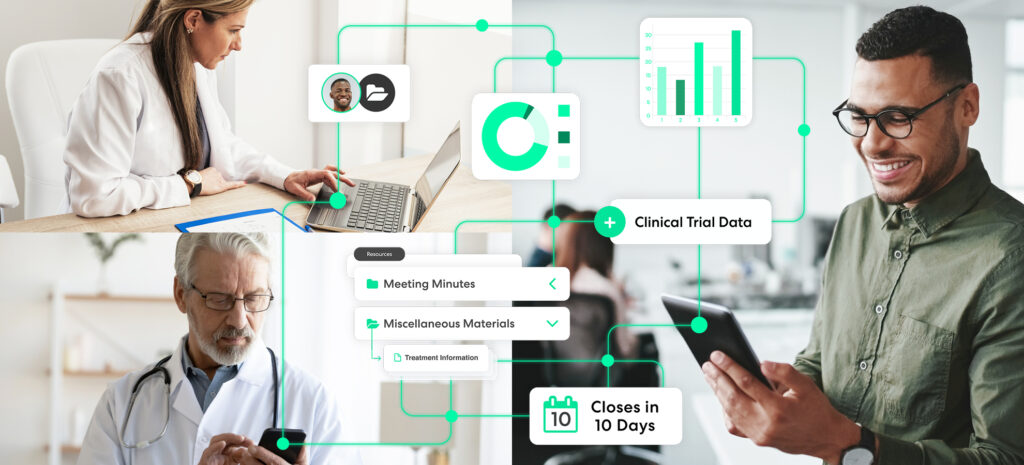You can listen to this post instead.
Pharmaceutical and medical device companies have all adapted to new, technology-enabled ways of working. Many organizations are moving forward with technology at the center of their strategic plans for the year ahead. For life science teams, this might mean implementing an insights management solution. And while new technology can prompt visions of extra costs, intensive training, and long ROI cycles, it doesn’t have to be that way. Getting started with insights management can be less disruptive than you might think.
Get comfortable with tech
The pandemic drove many organizations to accelerate their plans for digital transformation. And while tech implementations can seem daunting, the benefits are too powerful to ignore – in the pharmaceutical industry, digital transformation is critical for improved patient care, cost-effectiveness, greater transparency, improved production, and drug development.
“Digital innovation has been accelerated by 10 years by what has happened over the course of the last 18 months.” — Manoj Raghunandan, president, global self-care and consumer experience, Johnson & Johnson
Companies will also look to technology for another important reason: having weathered the COVID-19 crisis, teams want to prepare for the next crisis. The pandemic paused clinical trials, interrupted research, and caused severe supply chain disruptions – breakdowns that can threaten operations – and life science companies are eager to adopt technology that ensures business continuity. Having learned under duress what worked and what fell short, companies will be strategic about choosing technology that aligns with their work and goals.
Change how you think about insights
Life science teams need to shift their view of insight-gathering from separate, tactical activities to a single strategic process that drives value to the organization. Insights management means considering all aspects of insight-gathering – from getting a complete picture of a disease landscape through effective engagement and formulating actionable next steps – as one process with one solution. When you think about it in these terms, it’s easier to understand how a technology platform can solve the problem.
Practically speaking, this shift in perspective has been due for a while. Historically, life science insights were gathered from experts by medical science liaisons. Today, it’s a broader process that involves building a scientific narrative over time, with input from traditional one-on-one interactions as well as larger engagements with doctors, payers, patients, peers, and other stakeholders. Technology can help by making it easier to find the people who exert influence in specific disease communities and engaging them no matter where they are or how busy their schedule is.
Related content to download and read now: Solving the Life Science Insight Gap
Understand what’s creating the need for better insights management
During the challenging months of 2020 and 2021, pharmaceutical and medical device companies felt pressure from two competing forces: the business disruption felt by every industry, plus the need to develop a vaccine, life-saving therapies, and desperately needed protective equipment and medical supplies.
The uncertainty, time pressure, and restricted ability to collaborate in person showed most life science companies a version of the future that wasn’t very appealing – and they are eager to enable a more efficient and effective way of working. By changing their perspective about what insights management can be, life science teams are already preparing themselves to transform it within their own organization.
Explore further: read the first post in this series to learn more about insights management or the five trends driving the adoption of insights management technology.







